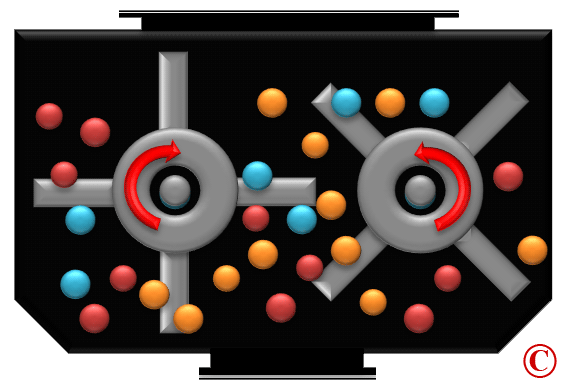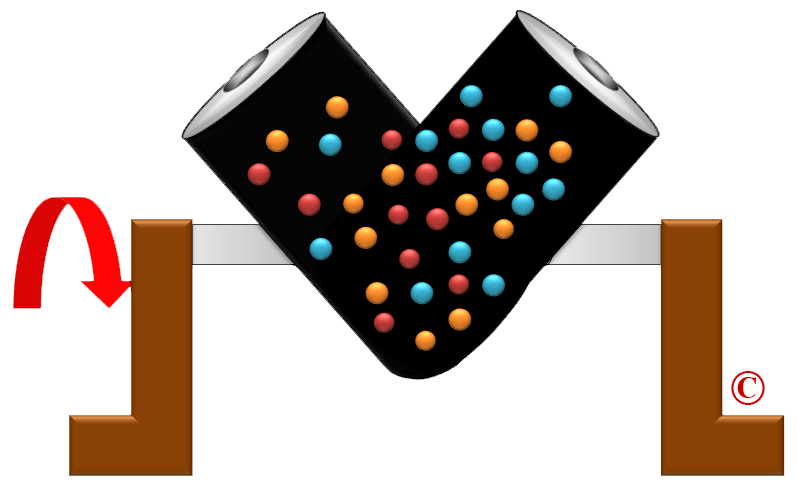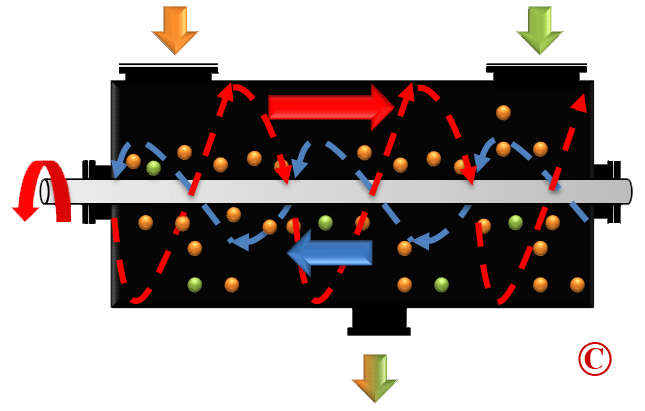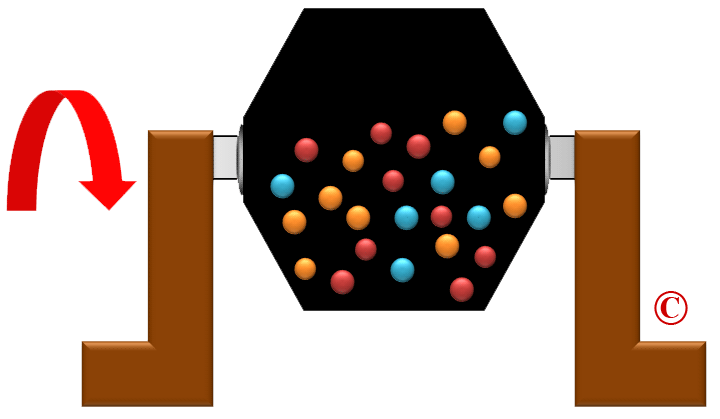
Industrial mixer
Encyclopedia





Blend
In linguistics, a blend is a word formed from parts of two or more other words. These parts are sometimes, but not always, morphemes.-Linguistics:...
a wide range of materials used in different industries including the food
Food
Food is any substance consumed to provide nutritional support for the body. It is usually of plant or animal origin, and contains essential nutrients, such as carbohydrates, fats, proteins, vitamins, or minerals...
, chemical, pharmaceutical, plastic
Plastic
A plastic material is any of a wide range of synthetic or semi-synthetic organic solids used in the manufacture of industrial products. Plastics are typically polymers of high molecular mass, and may contain other substances to improve performance and/or reduce production costs...
and mineral
Mineral
A mineral is a naturally occurring solid chemical substance formed through biogeochemical processes, having characteristic chemical composition, highly ordered atomic structure, and specific physical properties. By comparison, a rock is an aggregate of minerals and/or mineraloids and does not...
industries. They are mainly used to mix different materials using different types of blades to make a good quality homogeneous mixture. Included are dry blending
Dry blender
A Dry blender is a type of industrial mixer which is typically used to blend multiple dry components until they are homogenous. Often minor liquid additions are made to the dry blend to modify the product formulation...
devices, paste mixing designs for high viscosity
Viscosity
Viscosity is a measure of the resistance of a fluid which is being deformed by either shear or tensile stress. In everyday terms , viscosity is "thickness" or "internal friction". Thus, water is "thin", having a lower viscosity, while honey is "thick", having a higher viscosity...
products and high shear models for emulsification, particle size reduction and homogenization
Homogenization (chemistry)
Homogenization or homogenisation is any of several processes used to make a chemical mixture the same throughout.-Definition:Homogenization is intensive blending of mutually related substances or groups of mutually related substances to form a constant of different insoluble phases to obtain a...
.
Industrial mixers range from laboratory
Laboratory
A laboratory is a facility that provides controlled conditions in which scientific research, experiments, and measurement may be performed. The title of laboratory is also used for certain other facilities where the processes or equipment used are similar to those in scientific laboratories...
to production line
Production line
A production line is a set of sequential operations established in a factory whereby materials are put through a refining process to produce an end-product that is suitable for onward consumption; or components are assembled to make a finished article....
scale, including Ribbon Blender, V Blender, Cone Screw Blender, Screw blender, Double Cone Blender, Double Planetary High Viscosity Mixer
High Viscosity Mixer
High Viscosity paste mixing involves the combining of liquid and solid ingredients. The end product usually starts at several hundred thousand centipoise and can reach as high as several million centipoise. Typical mixers used for this purpose are of the Double Arm, Double Planetary or Planetary...
, Counter-rotating, Double & Triple Shaft, Vacuum Mixer, Planetary Disperser, High Shear Rotor Stator and Dispersion Mixers, Paddle, Jet Mixer, Mobile Mixers and Drum Blenders. The Banbury mixer
Banbury mixer
The Banbury Mixer is a brand of internal batch mixer. The "Banbury" trademark is owned by Farrel Corporation. Internal batch mixers such as the Banbury mixer are used for mixing or compounding rubber and plastics. The original design dates back to 1916. The mixer consists of two rotating spiral...
is effective at mixing or kneading viscous materials.
They can operate at different temperatures and pressures for mixing different solutions and can also have internal or external heating systems added to them. Options also exist where spray nozzles, CIP, PLC and pneumatic or electric systems can be used. Systems can come equipped with hydraulic or electronic soft start mechanisms so that they start and stop smoothly.
Basic Nomenclature
For liquid mixing, the nomenclature is rather standardized:- Impeller Diameter, "D" is measured for industrial mixers as the maximum diameter swept around the axis of rotation.
- Rotational Speed, "N" is usually measured in revolutions per minute(RPM) or revolutions per second(RPS). This variable refers to the rotational speed of the impeller as this number can differ along several points of the drive train.
- Tank Diameter, "T" The inside diameter of a cylindrical vessel. Most mixing vessels receiving industrial mixers will be cylindrical.
- Power, "P" Is the energy input into a system usually by an electric motorElectric motorAn electric motor converts electrical energy into mechanical energy.Most electric motors operate through the interaction of magnetic fields and current-carrying conductors to generate force...
or a pneumatic motorPneumatic motorA pneumatic motor or compressed air engine is a type of motor which does mechanical work by expanding compressed air. Pneumatic motors generally convert the compressed air to mechanical work through either linear or rotary motion... - Impeller Pumping Capacity, "Q" The resulting fluid motion from impeller rotation.
Mixing Calculations
The level of mixing is determined by the pumping effect or dynamic response that the mixer imparts into the fluid. When a mixing impeller rotates in the fluid, it generates a combination of flow and shear. The impeller generated flow can be calculated by using the following equation:- Flow (GPM) = (Flow_Number * RPM * Impeller_Diameter^3) / 231
To calculate power draw, use the following equation:
- Power (HP) = (Power_Number * RPM^3 * Impeller_Diameter^5 * Fluid_Specific_Gravity) / (1.525 * 10^13)
Flow Numbers and Power Numbers for impellers have been published by the North American Mixing Forum, Post Mixing, and Fusion Fluid Equipment. An online mixing calculator is available http://www.fusionfluid.com/html/Knowledge-MixingCalculator.html
See also
- Mixing (process engineering)Mixing (process engineering)In industrial process engineering, mixing is a unit operation that involves manipulating a heterogeneous physical system, with the intent to make it more homogeneous...
- Planetary mixerPlanetary mixerA planetary mixer is a device used to mix round products including adhesives, pharmaceuticals, foods, chemicals, electronics, plastics and pigments....
- Static mixerStatic mixerA static mixer is a device for mixing two fluid materials. Most commonly, the fluids are liquid; however, static mixers are used to mix gas streams, disperse gas into liquid or disperse immiscible liquids. The device consists of mixer elements contained in a cylindrical or squared housing. These...
- Banbury mixerBanbury mixerThe Banbury Mixer is a brand of internal batch mixer. The "Banbury" trademark is owned by Farrel Corporation. Internal batch mixers such as the Banbury mixer are used for mixing or compounding rubber and plastics. The original design dates back to 1916. The mixer consists of two rotating spiral...

